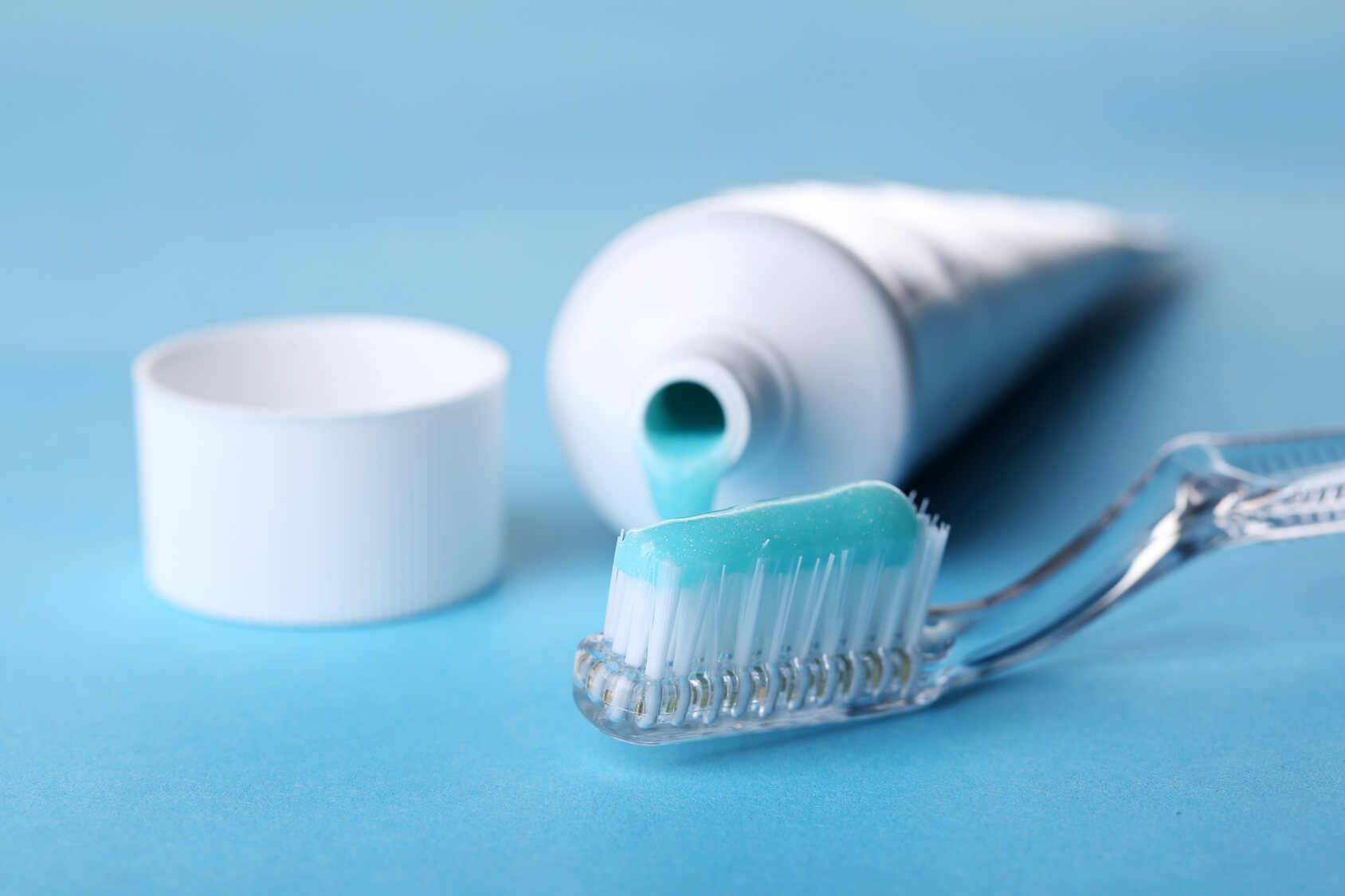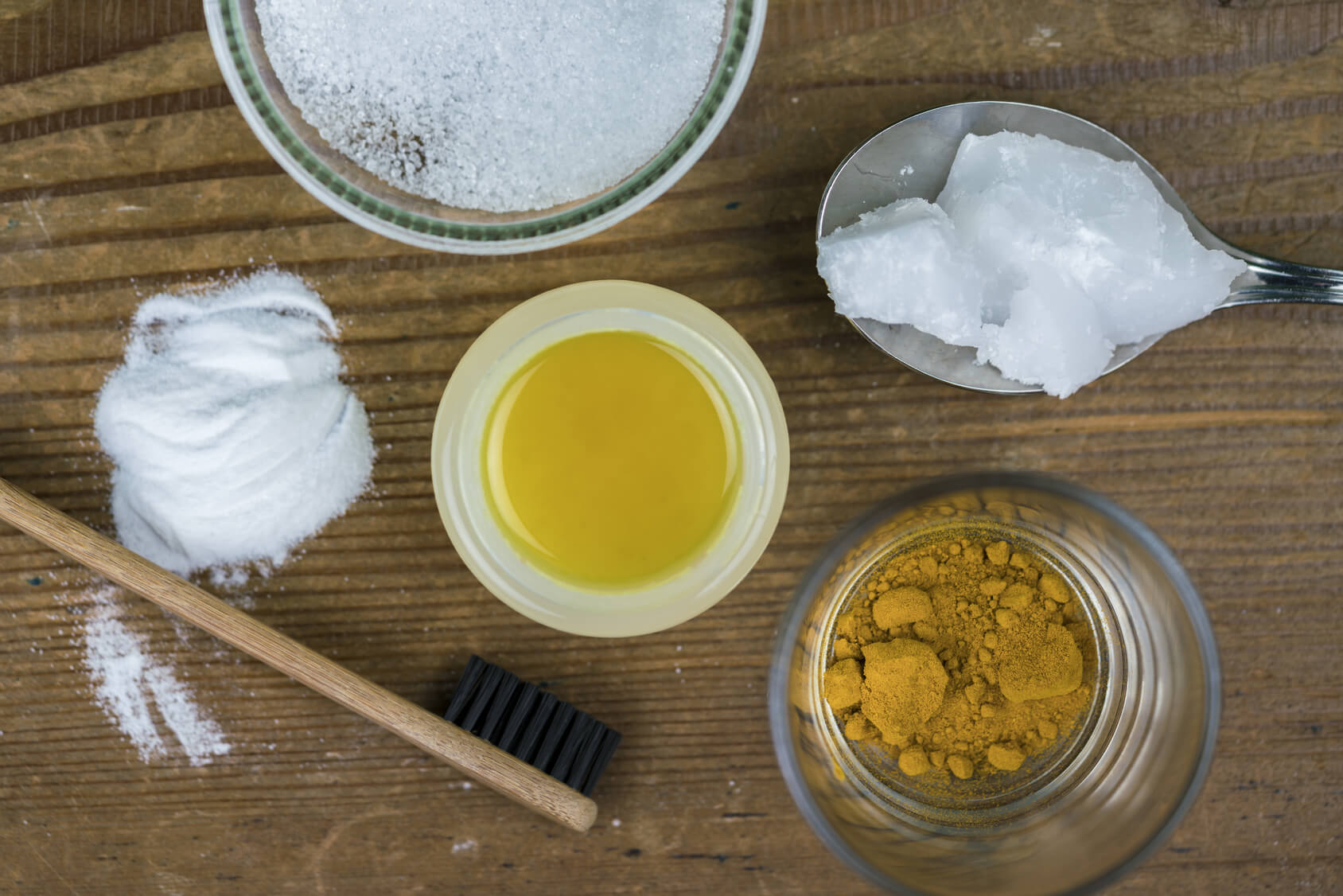
Just when you thought it was safe to brush your teeth, here comes a report telling you toothpaste could be cancerous! But, is there any rationality to that claim? Let’s dig a little deeper and find out what’s really lurking inside your tube of toothpaste. And, what you can do instead to avoid those seemingly harmless chemicals.
What makes toothpaste so toxic?
No matter where you turn, you can’t seem to avoid chemicals these days, even in your toothpaste. However, not brushing your teeth is not an option, unless of course you want swollen and bloody gums. So, what exactly is in toothpaste that makes is toxic for your health?
Triclosan
Triclosan is an ingredient added to many consumer products intended to reduce or prevent bacteria. You’ll not only find it in certain brands of toothpaste but also in some antibacterial soaps, body washes and cosmetics (regulated by the FDA). It can also be found in clothing, kitchenware, furniture and toys (not regulated by the FDA).
Although triclosan has antibacterial benefits that help prevent gingivitis, the risks seem to outweigh any possible benefits. Concerns about triclosan surfaced after it was detected in human breast milk, blood and urine samples according to a study by the Environment and Protection Agency (EPA). The chemical has been linked to antibiotic resistance and endocrine disruption.
FDA says triclosan may lead to skin cancer
Endocrine-disrupting chemicals are a serious health concern, because they can promote several health problems, including breast, ovarian, prostate and testicular cancer. In addition, endocrine-disrupting chemicals are linked to preterm and low birth weight babies, advanced puberty in girls and undescended testicles in boys.
Additional animal studies by the U.S. Food and Drug Administration (FDA) have shown that exposure to high doses of triclosan may disrupt thyroid function. If that’s not bad enough, other ongoing animal studies by the FDA suggest that long-term exposure of triclosan may lead to skin cancer. Further research by the American Chemical Society found that triclosan tested on human breast cancer interfered with genes, resulting in more cancer cells.
Why everything tastes bad after you brush your teeth
You can thank sodium lauryl sulfate, also known as sodium laureth sulfate, for making everything just taste plain bad after brushing your teeth. These chemicals are surfactants or wetting agents that are added to toothpaste to help it spread easily throughout your mouth and make it bubble and foam. Sodium laureth sulfate is also used in detergents, fabric softeners, paints, laxatives, insecticides and more.
Although there is no current evidence to support that sodium lauryl or laureth sulfate can give you cancer, it is an irritant that interferes with the functioning of your taste buds, thus enhancing bitter tastes.
According to the David Suzuki Foundation, depending on manufacturing processes, sodium laureth sulfate may be contaminated with measurable amounts of ethylene oxide and 1,4-dioxane. Ethylene oxide is a known human carcinogen and 1,4-dioxane is a possible human carcinogen. In addition, 1,4-dioxane doesn’t easily degrade. Meaning, it can remain in the environment long after it is rinsed down the drain.
Fluoride and “brain drain”

Hotly debated and highly controversial, fluoride has long been heralded as a preventative to decaying teeth. But a study published in the journal Langmuir revealed that the apparently beneficial fluorapatite layer formed on your teeth from fluoride is too thin — a mere six nanometers — to really protect the teeth. In comparison, you would need 10,000 nanometers to get the width of one strand of your hair.
Researchers now question whether this ultra-thin layer can actually protect your enamel, since it’s easily eliminated by chewing food. Scientists also question whether fluoride can affect the neurodevelopment in children.
Researcher from the Environmental Health Perspectives performed a review and meta-analysis of published studies to understand the effects of fluoride exposure on neurodevelopment. What they found was that children in high-fluoride areas had significantly lower IQ scores than those who lived in low-fluoride areas. “Fluoride seems to fit in with lead, mercury and other poisons that cause chemical brain drain,” said senior author Philippe Grandjean to Harvard Health.
You need a healthier solution
Beyond the triclosan, sodium lauryl sulphate and fluoride you’ll also find artificial sweeteners like sorbitol, saccharin and aspartame. Often used in toothpaste to improve taste, these chemicals are also highly controversial and pose their own sets of health concerns.
Clearly, toothpaste is loaded in chemicals that don’t belong in your mouth! Over the course of a lifetime, the average person may use around 20 gallons of toothpaste. Sadly, though, you may not even know it’s making you sick, until it’s too late.
And even if you spit out your toothpaste each time you brush, your mouth is so absorbent that residual chemicals can easily find their way into your bloodstream. This is why it’s so important to choose a brand of toothpaste that is free of chemicals. Another option might be to make your own all natural toothpaste at home. Here’s how to make some:
Coconut oil
Coconut oil is a great addition for homemade toothpaste because it can naturally kill streptococcus bacteria, which are commonly found in the mouth. It also helps prevent candida in the mouth. An Indian study found that swishing coconut oil (or oil pulling) is an effective way to decrease plaque formation and plaque-induced gingivitis.
Bentonite clay
Bentonite clay is a natural polisher that’s rich in minerals but not too abrasive. It’s also alkaline, so it helps reduce acidity in the mouth. Bentonite clay is actually formed when volcanic ash settles in water. When surrounded by water, it produces a negative charge that acts like a magnet, according to Medlicker. This enables the clay to remove toxins from the body, while also providing important minerals. Bentonite clay is healthy for the mouth and gentle on teeth. It’s actually used to clean and polish exotic cars without damaging the finish.
Baking soda
Baking soda neutralizes acid and whitens teeth, without being too abrasive. A study from the University Park Research Center in Fort Wayne found that after approximately 24 hours without oral hygiene, 270 participants reported that baking soda was more effective for removing plaque than any non-baking soda toothpaste products.
Xylitol
Xylitol naturally occurs in many fruits and vegetables. Once extracted and processed it yields a white, crystalline granule. It can be used in any recipe that calls for sugar. However, unlike processed sugar, it has the added benefit of stabilizing insulin and hormone levels. It also promotes good health and has none of the negative side effects of white sugar or artificial sweeteners.
It’s an excellent addition for toothpaste because of its ability to reduce cavity-causing bacteria in the mouth. Just don’t add too much to your toothpaste recipe — you’ll find that it’s very sweet.
A word of warning: Xylitol is highly toxic to dogs. So, if you do use it in your toothpaste, keep it away from pooch’s mouth.
Healthy Homemade Toothpaste

Combine these natural ingredients for a toothpaste that will leave your mouth fresh, naturally. You may even add a tablespoon of turmeric to the mix, which may help whiten your teeth.
Ingredients
- 1/2 cup bentonite clay
- 2/3 cup filtered water
- 2 tsp baking soda
- 1/4 cup coconut oil
- 5 drops xylitol (optional)
- 1 to 4 drops peppermint essential oil
Instructions
- Mix the clay and water together well.
- Add in the baking soda, coconut oil, xylitol and essential oil.
- Continue to mix well until a paste forms.
- Store toothpaste in a jar, and secure with a lid.
- To use it, dampen your toothbrush and spoon paste onto your toothbrush. Brush as usual.
Don’t buy into the hype that only brand-name toothpastes give you sparkling, white teeth and fresh breath. That commercial toothpaste may be doing more harm for your health than good. So, why not make your own, healthier version? You have nothing to lose, except toxins.
— Katherine Marko

